Excerpts from Jim Conrad's
Naturalist Newsletter
from the September 7, 2014 Newsletter issued from the Frio Canyon Nature Education Center in the valley of the Dry Frio River in northern Uvalde County, southwestern Texas, on the southern border of the Edwards Plateau; elevation ~1750m (~5750 ft); N29.62°, W99.86°; USA
TEXAS KNOTWEED
On a muddy bank beside a stream connecting holding ponds in Cook's Slough Nature Park on Uvalde's south side, there was a small thicket of knee-high plants with exceptionally thin, wiry, straight stems bearing small leaves and tiny flowers, all fairly unnoticeable among surrounding grasses, as seen below:
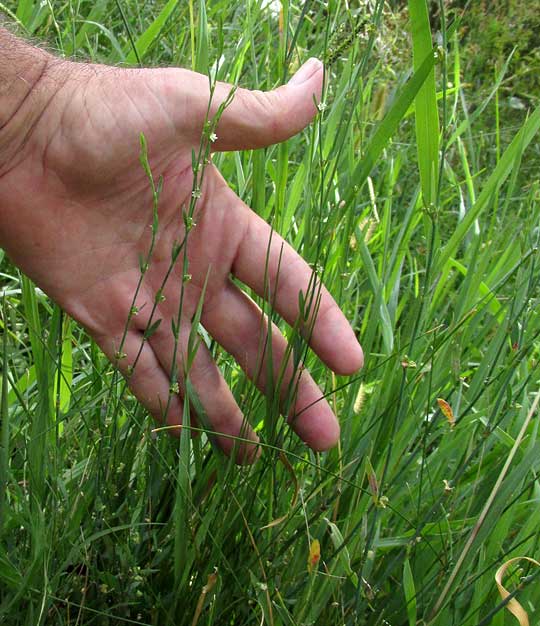
A closer look at the stiff stems and modest leaves and flowers is shown below:
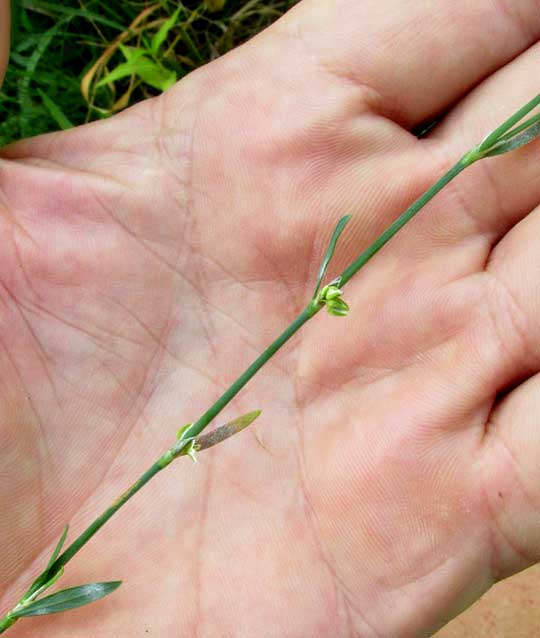
Most flower were not yet open, and were distinctively triangular in shape, or "trigonous," as shown below:
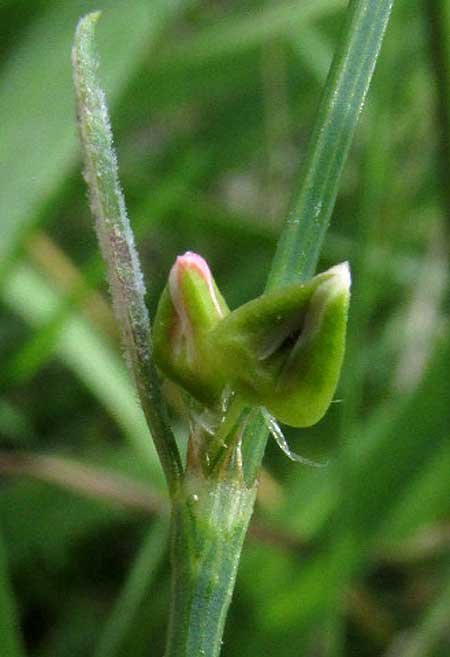
Bearing trigonous flowers is a good field mark, but maybe an even more important one is the clear, cellophane-like, long-toothed "collar" below the flowers and surrounding the stem, shown in the above picture. The collar is an "ocrea," or "stipular sheath," and when you see such a thing surrounding a stem you should think "Buckwheat Family," Polygonaceae, sometimes also called the Smartweed or Knotweed Family. Most dicots, as opposed to monocots such as grasses and lilies, have flower parts in 4s or 5s, or multiples thereof, but the Buckwheat Family has them in 3s, like most monocots, and that's unusual.
After looking around awhile an open flower turned up, shown below:
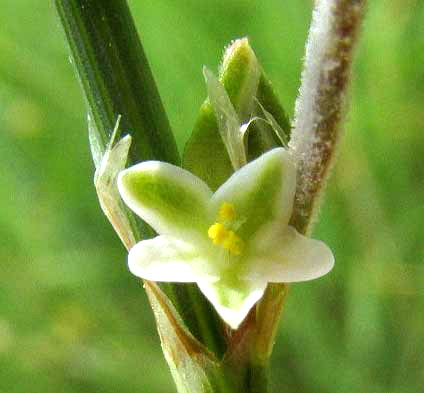
This plant astonished me, for I'd never seen any member of the Buckwheat Family like it. Fortunately, the Buckwheat Family is finished in the online Flora of North America, so I could "key out" our plant. What I came up with amazed me even more. I'd thought the plant must be a genus I'd never heard of, but it was the commonly occurring smartweed/knotweed genus itself, Polygonum, and if you do a quick image search of that genus you'll see for yourself that not many smartweeds look like ours. For one thing, most smartweeds produce their flowers in densely packed, fingerlike spikes, not in few-flowered clusters apparently distributed along a leafy stem.
In Flora of North America's genus key our plant's characteristics were so outstanding that in the key for Polygonum the species keyed out within seconds. It was enough to note that the flowers' anthers were yellow, not pink to purple, and that the plant was a perennial, not an annual herb, as I'd thought all smartweeds had to be. Below, you can see its woody base and perennial rhizome:
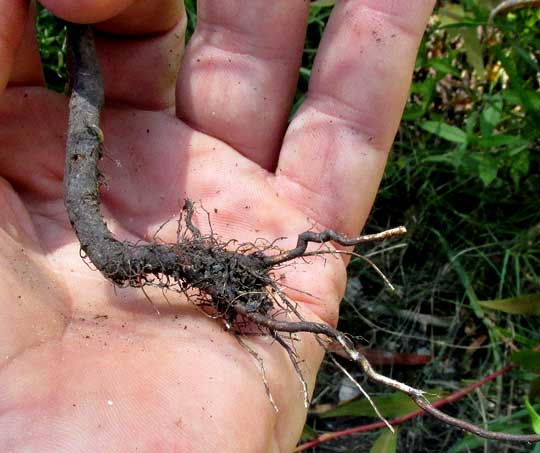
Our plant is mostly known as the Texas Knotweed, Striped Smartweed or Striped Knotweed. It's POLYGONUM STRIATULUM, in the whole world known only from Texas where, the Flora says, it occurs in "Seasonal moist places, sterile prairies, granitic soils."
Not much information is available about this seldom-noted species. I'm glad to provide what little we have here.